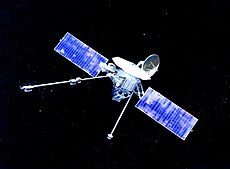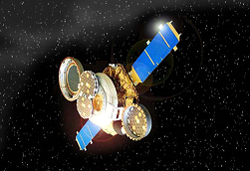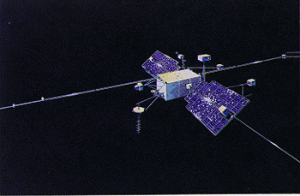
Mariner 10
Mariner 10 flew by Mercury for the first time in 1974. Launched November 3, 1973, it first flew by Venus on February 5, 1974. After it flew by Mercury, it orbited the sun and came close to Mercury again on September 21, 1974. A third encounter happened on March 16, 1975. Data from Mariner 10 included 2,800 photographs of Mercury as well as information on a helium atmosphere and an iron-rich core. Mariner 10 ran out of fuel and stopped transmitting data on March 24, 1975. Scientists believe that it continues to orbit the sun. Children could learn more at: Mariner 10.

